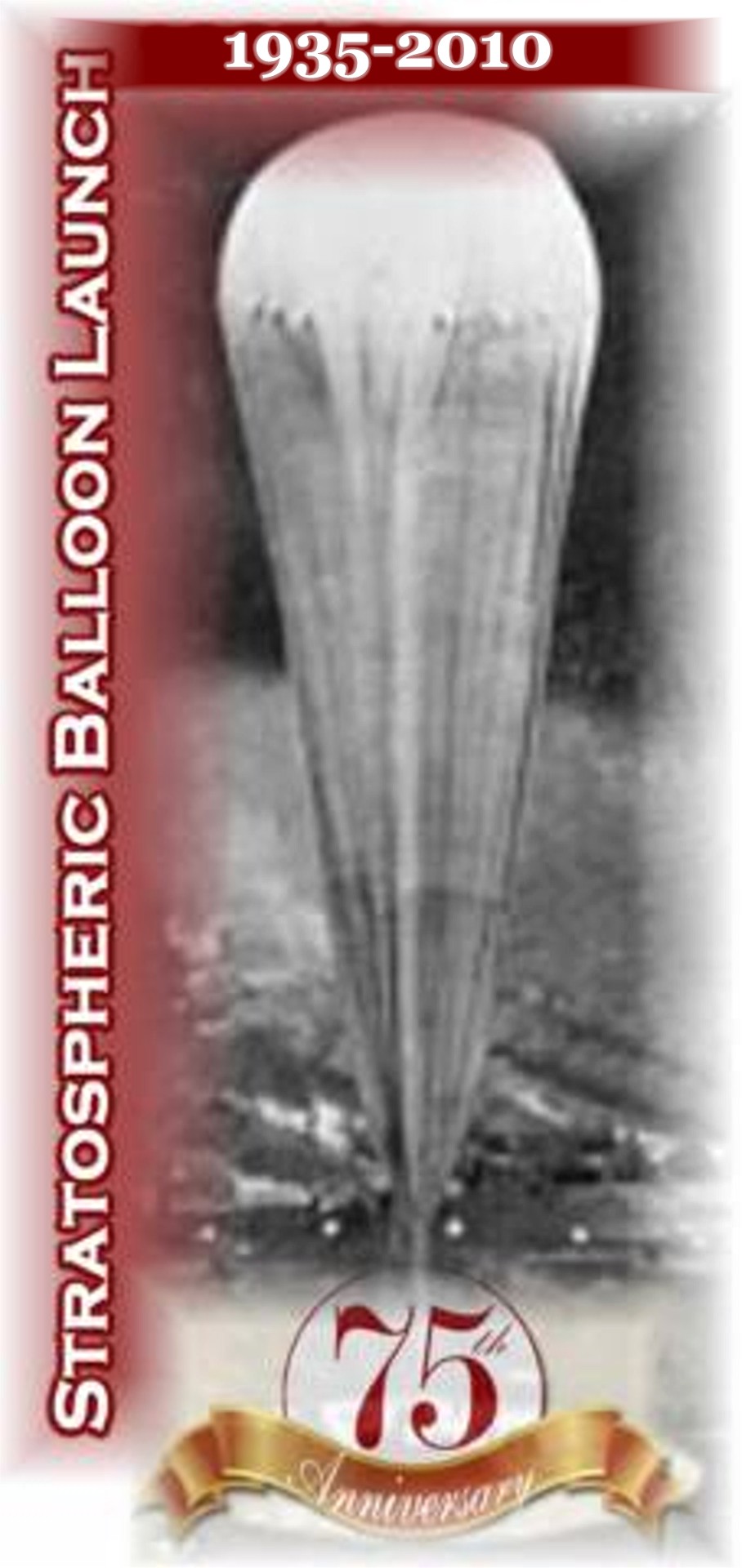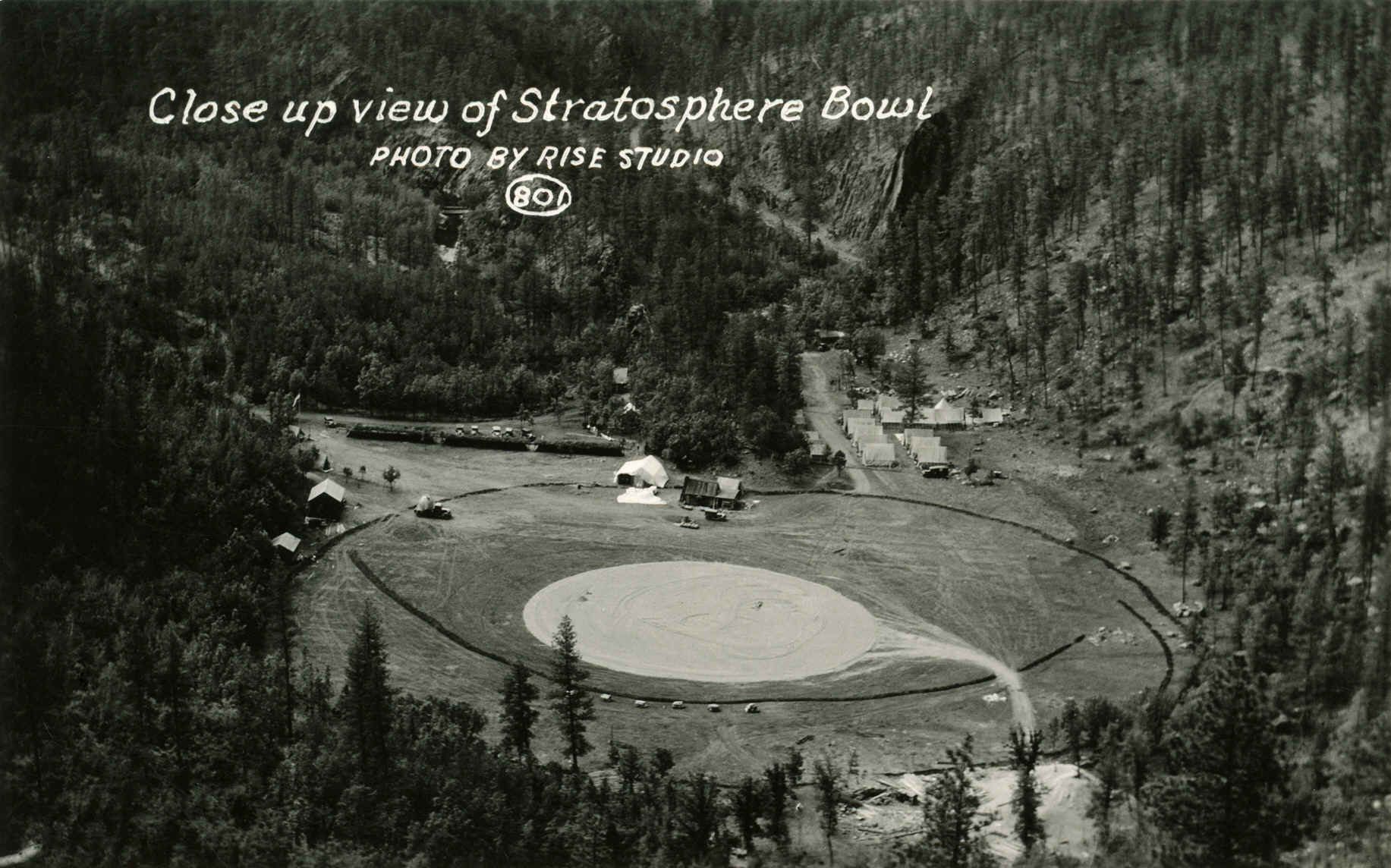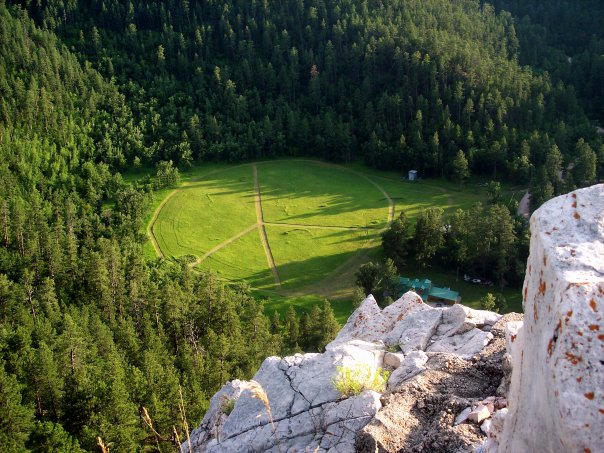
Presented by:
Morning
Star Balloon Company
Flying the Skies of SW WA & Beyond
360/601-2433
Email: Captain Crystal
Copyrightę1996-2010
Special Thanks to the following references:
Wikipedia.com
National Geographic 1935-1936
American Heritage 1935
South Dakota Air and Space Museum
Kay West


 Stratobowl in 1934
Stratobowl in 1934
and today.
On September 24-26, 2010, a small group of hot air balloonists set sail and ventured aloft from the original location of the first stratospheric balloon launched on November 11, 1935...the Stratobowl outside of Rapid City, South Dakota. This historic event marked the 75th Anniversary of the first of many records which have since been broken...the first photograph of the stratosphere, the largest gas balloon built (3,700,000 cubic foot), and the highest anyone has flown over 72,000 feet. Our goal is to honor those who went before us in flight. But first, let's explore that historic event.
What is a Stratobowl?
The Stratobowl is a natural limestone box canyon (on three sides) which has been slowly carved after years of river flow located approximately 12 miles south of Rapid City, South Dakota within the limits of the Black Hills National Park. This canyon (or bowl) received its name from the famous Stratospheric Balloon launches in 1934-35. At the time the US Army Air Corps named it the Stratosphere Bowl, but the name was soon shortened to the "Stratobowl".
The Black Hills are home to the tallest peaks of continental North America east of the Rockies. This is also a major tourist spot which includes Mount Rushmore, Custer State Park, Crazy Horse Memorial, and the Sturgis Motorcycle Rally.
In 1934–1935, this privately owned piece of land housed a stratospheric balloon launch site,
initially known as Stratocamp, sponsored by the National Geographic Society and the United States Army Air Corps. In 1956–1959
the site was reused by the United States Navy Stratolab
project.
Why launch a balloon from the Stratobowl?
At the base of the Stratabowl is a 4 acre flat grassy field. The base of the bowl is 400' below a rim of winds. This makes the Stratobowl perfect for calm conditions below with winds to fly somewhere up on top. This also means if a balloon is inflated, it will stand tall while observers can view seams, ropes, and situate the pilots in position for launch.
Celebration of a Historic
Flight
 On July 28, 1934 the first attempt at launching Explorer
from the Stratobowl took place. Unfortunately this flight was not without mishap, it
burst in flight and finally exploded and failed at its attempt to fly above the 10,000
foot mark.
On July 28, 1934 the first attempt at launching Explorer
from the Stratobowl took place. Unfortunately this flight was not without mishap, it
burst in flight and finally exploded and failed at its attempt to fly above the 10,000
foot mark.
 On July
12, 1935 the second attempt at a launch failed when the balloon burst while on the ground.
This balloon was called the Explorer II. And, as they say, "Third
times a charm," on November 11, 1935 a successful attempt with Explorer II
reached the stratosphere and made a worldwide historic impact.
On July
12, 1935 the second attempt at a launch failed when the balloon burst while on the ground.
This balloon was called the Explorer II. And, as they say, "Third
times a charm," on November 11, 1935 a successful attempt with Explorer II
reached the stratosphere and made a worldwide historic impact.
 September
25-26, 2010 will mark the 75th Anniversary of the Explorer II. A small group of hot
air balloon pilots, original members, and relations to original family members who were
involved and viewed history in the making, participated in an inaugural flight from the
base of the Stratobowl.
September
25-26, 2010 will mark the 75th Anniversary of the Explorer II. A small group of hot
air balloon pilots, original members, and relations to original family members who were
involved and viewed history in the making, participated in an inaugural flight from the
base of the Stratobowl.